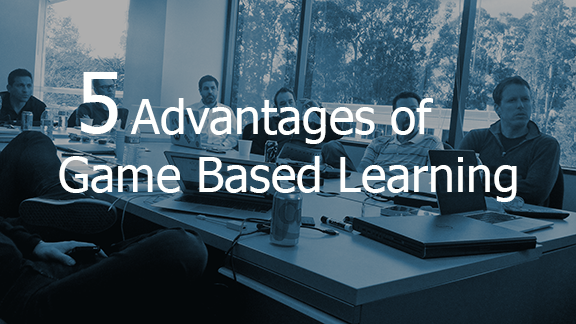
Digital learning games are comprised of activities that require learners to collaborate and actively participate in topic discussions. Through active learning, people will have higher recall of information and will retain material for longer periods of time. Not only will employers be more satisfied, but they will also see higher satisfaction rates among employees since they are improving their abilities while having fun with their peers.
Digital Game-Based Learning, also referred to as Gamification, is perfect for training employees on a multitude of topics, ensuring understanding of company policies, promoting attentiveness in important meetings, and even making a larger and more unique impact during sales proposals. Digital Game-Based Learning is beneficial in training sessions to see where employees are struggling and which employees are proficient in company policies and/or procedures. A quiz game, for example, can be used to review policies, hone sales techniques by using it as a sales training game, or simply as a team building exercise.
There are 5 main advantages of digital game-based learning:
- Creates a positively competitive environment - The chance for team play encourages individuals to strive for their best and use teamwork to achieve more than they could on their own.
- Stimulates participant focus - Real-time discussion and analysis of learning topics through interactive games strengthens participants’ attentiveness to subject matters.
- Increases participation - Participants will be more willing to provide honest feedback and overcome the “shyness factor” when using electronic keypads to voice their opinions.
- Enhances meaning and boosts retention - Active learning provides better focus and awareness which leads to greater memory recall in participants.
- Provides an engaging experience - Games boost the energy of the room to catch participant’s attention and provide opportunities for peer interaction.
In addition to the advantages listed above, they also reduce training time. Digital game-based learning increases efficiency through the use of instant assessments to determine each individual’s readiness for additional instruction. Instructors have greater control over the presentation material and their learners’ focus, which leads to less time needed for training and a higher learning curve.
One such add-in for Microsoft PowerPoint, OptionPower Group Competition Module, allows you to add interactive questions or group competition games to PowerPoint presentations to enhance participant focus and promote peer interactions. Three such PowerPoint game templates provided through the add-on include: Win a Million, similar to "Who Wants to be a Millionaire;" And the Answer is..., similar to "Jeopardy;" and The Quiz Challenge, similar to the "College Bowl" game.
Many such games are designed to be simple to use and customize while incorporating invaluable information to keep engagement and informational retention high. Effectively, this allows the creation of Jeopardy PowerPoints or Who Wants to be a Millionaire PowerPoints which may be used to create various types of sales training games as well as leadership training games.
There are 5 reasons why game-based learning is effective:
- People are highly engaged by games.
- Material is more comprehendible when placed into an enjoyable atmosphere.
- Social groups are established to encourage productive discussions.
- Games provide an opportunity to be creative and innovative, which can lead to new ideas.
- It’s fun!
PowerPoint game templates can be edited quickly to allow the client to make last minute changes if a new topic of concern arises prior to their meeting. This provides more flexibility than some other game-based learning systems or software and becomes a simple way to develop a training game for employees. It is also designed to be as simple as possible for participants so that time is not wasted at the start of the meeting learning how to use the system. Users simply hit the button on the keypad that corresponds to the answer they believe is correct on the screen.


